Abstract
196 skeletons of known age, sex and rac from the Terry Collection were studied in order to document 30 non-metric infracranial traits. Each trait had the ability to be expressed bilaterally, although significant side dimorphism was not observed. Sex differences were statistically significant for some of the traits within a racial group, but these differences were not as pronounced as the differences generated by non-metric cranial traits in the same populations, and were not effective in all racial groups. In general, these infracranial traits show some age dependency when correlation statistics are used, but this dependency is lost when the more robust chi 2 statistic is used. These data suggest that infracranial non-metric traits may be superior to cranial non-metric traits for population comparisons. Infracranial traits may be more durable than cranial traits having regard to the nature of most archaeological material.
Full text
PDF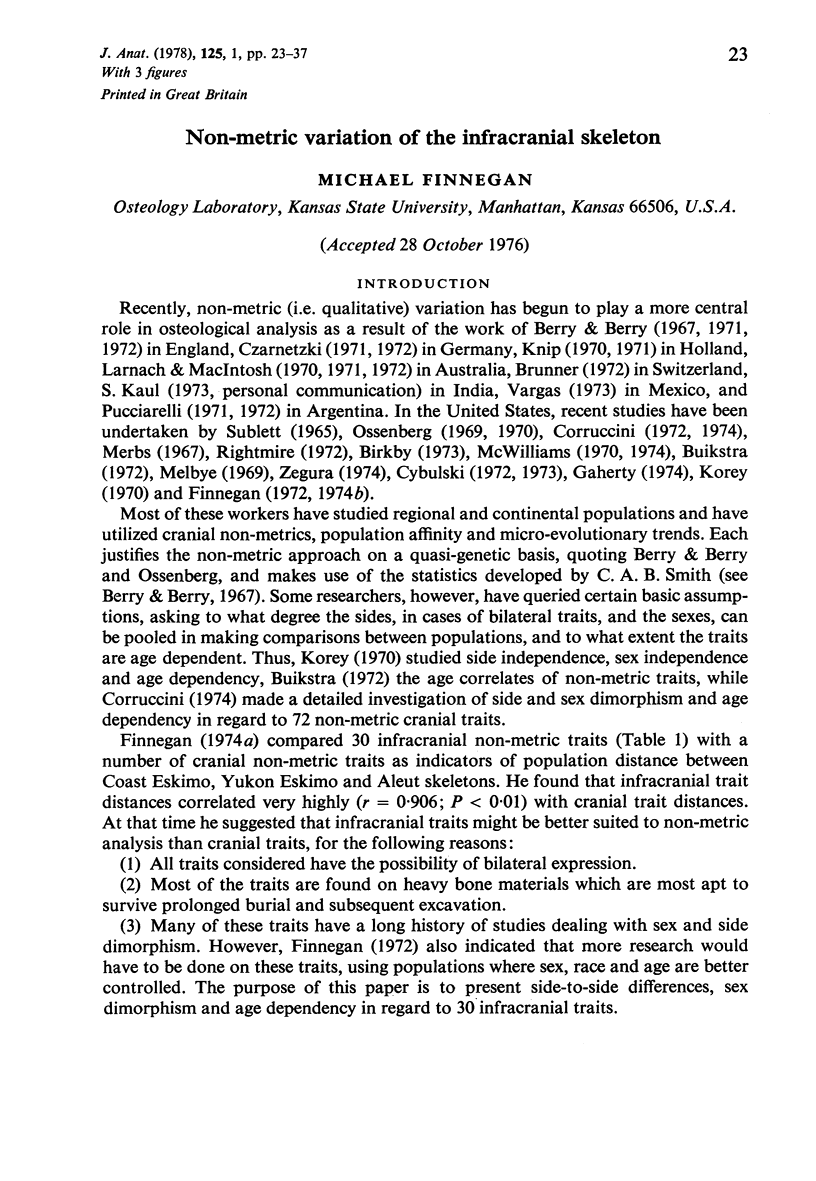
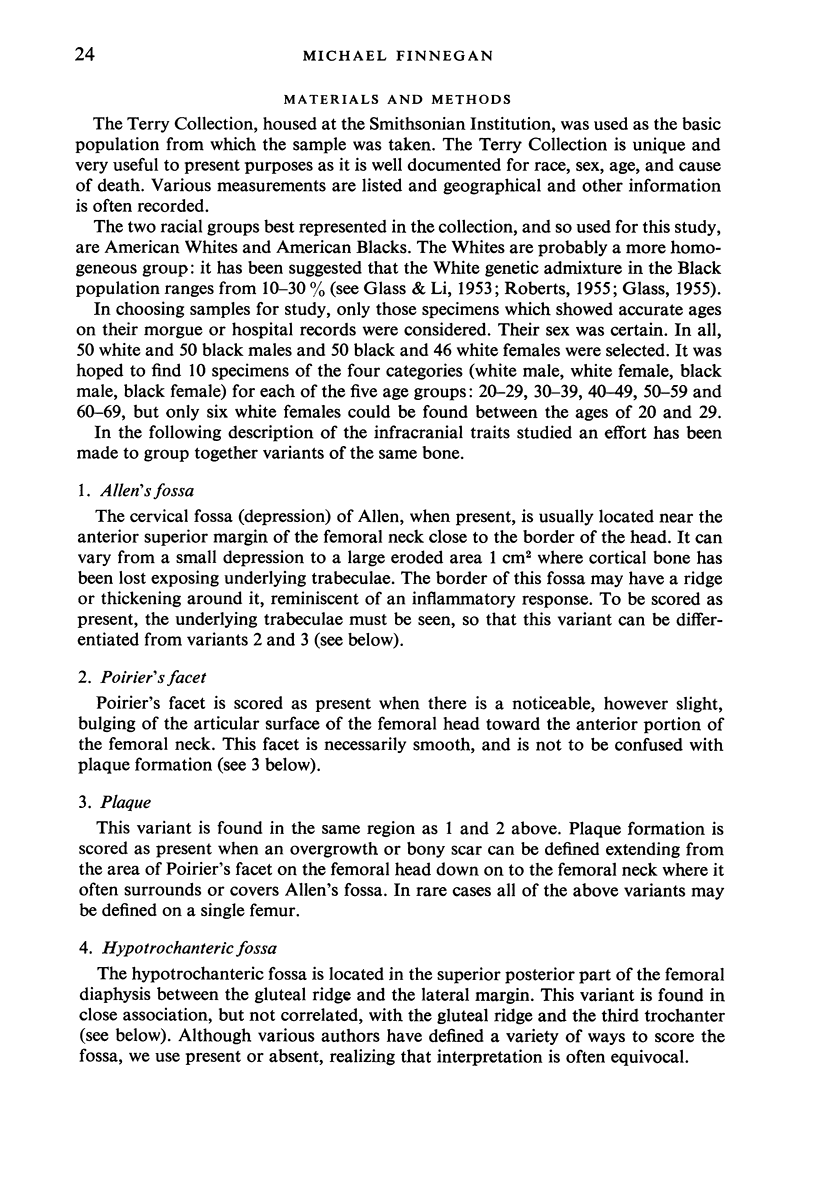
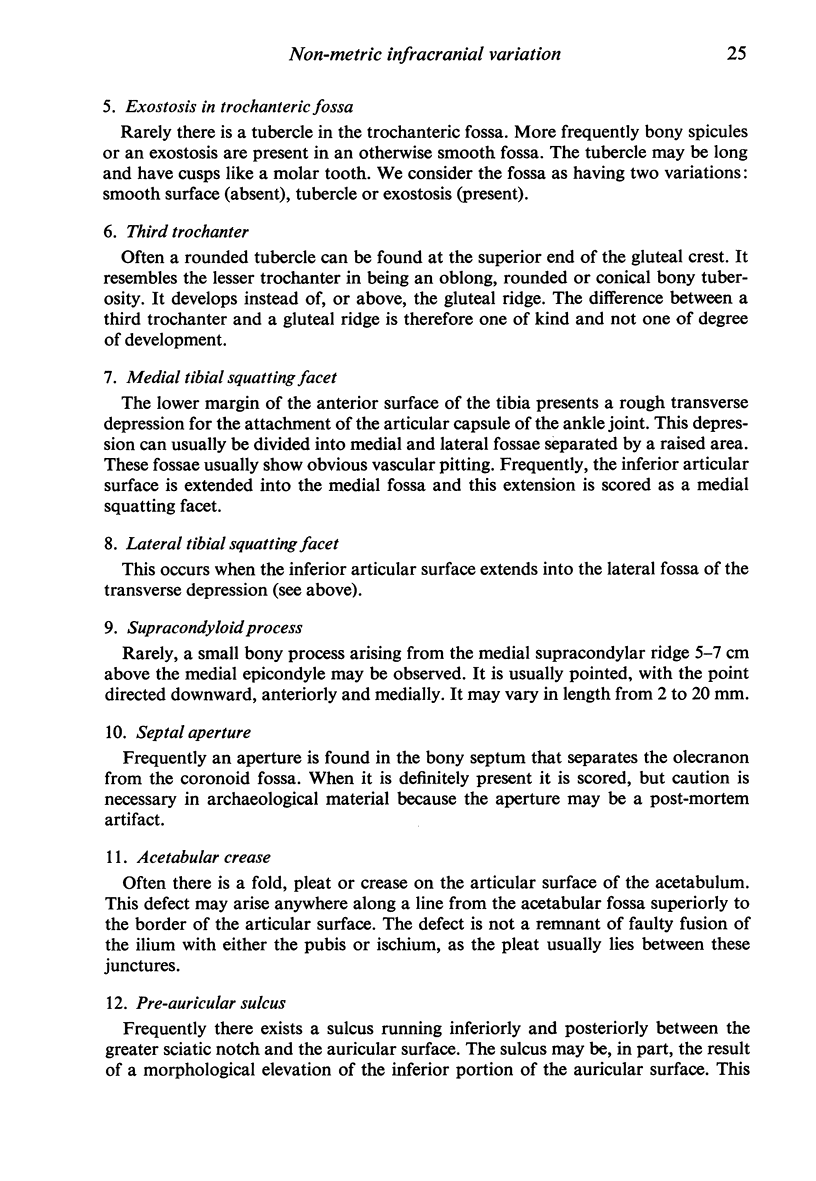
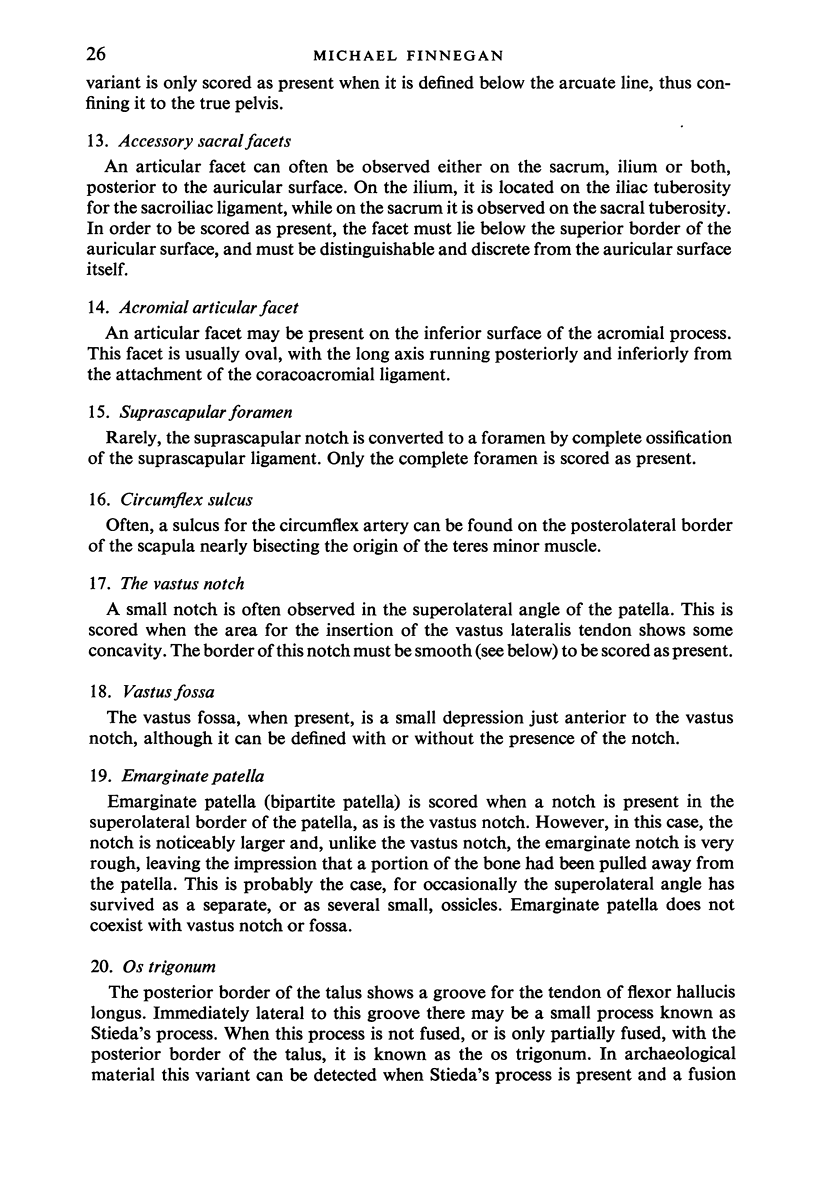
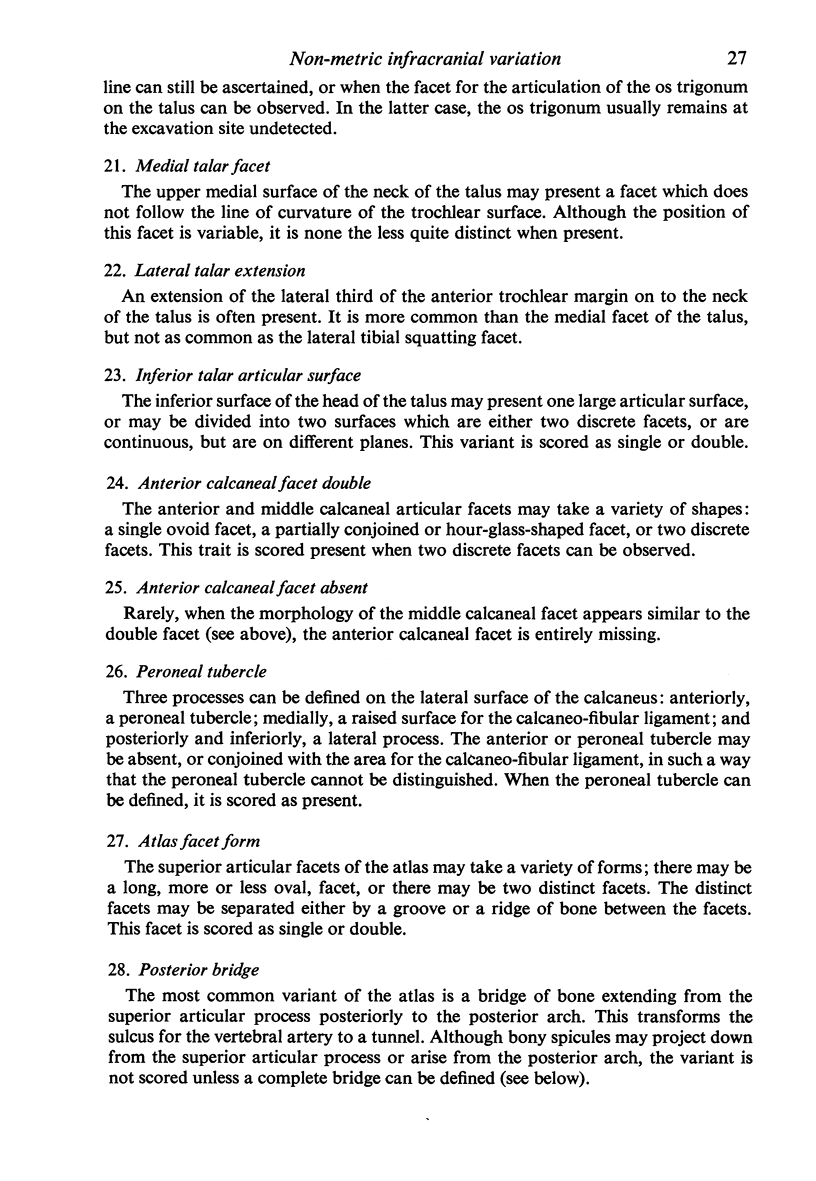
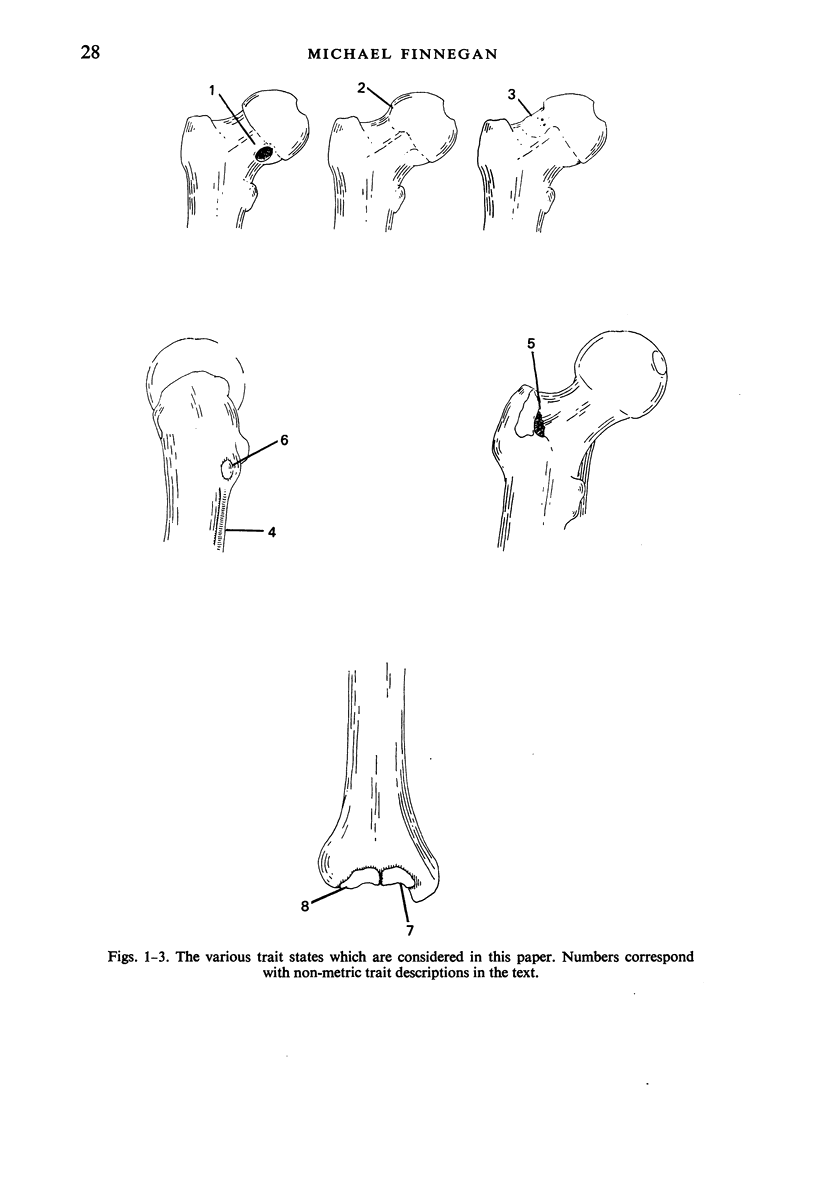

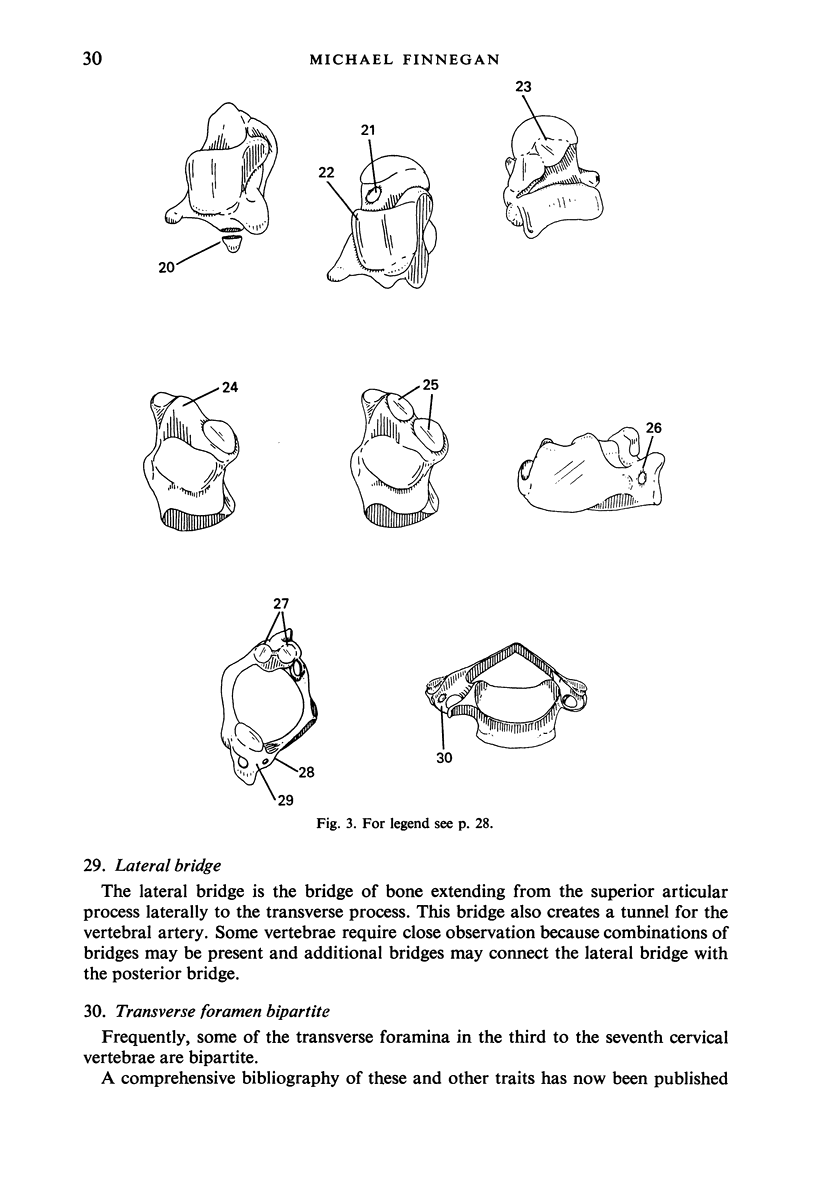
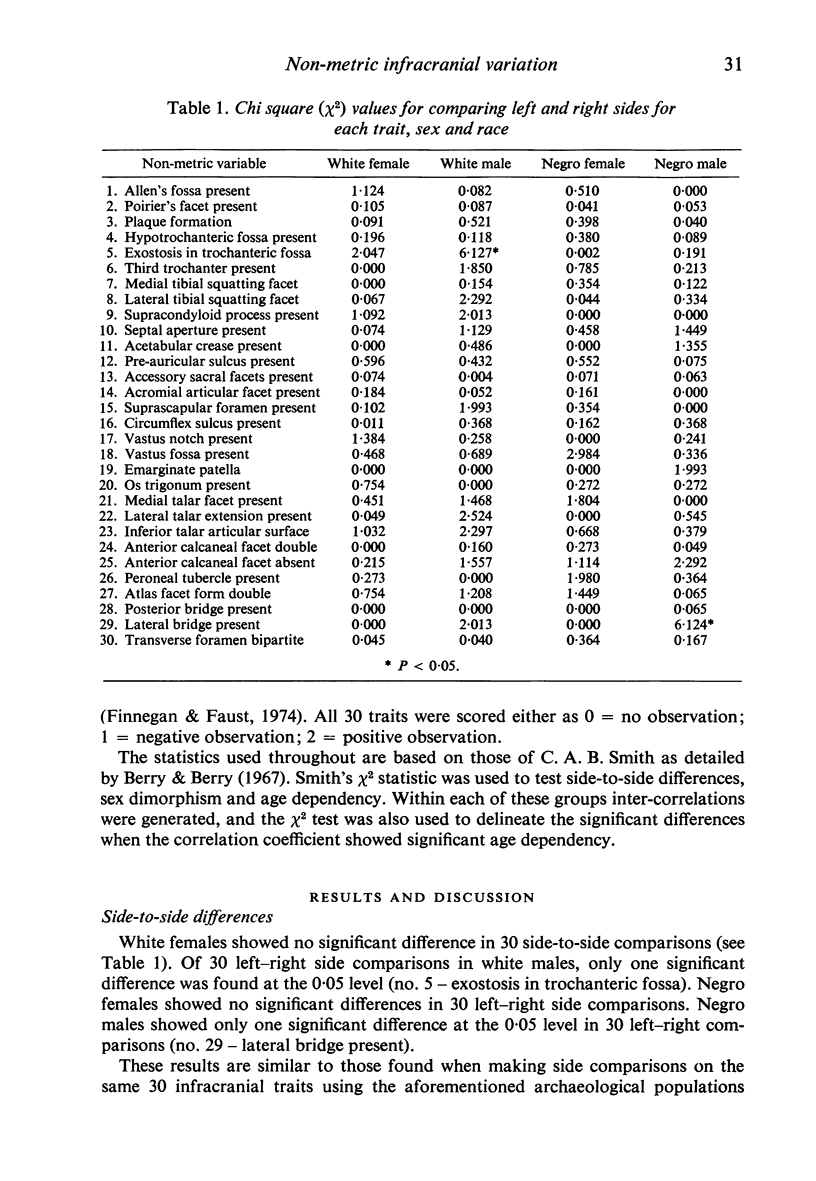
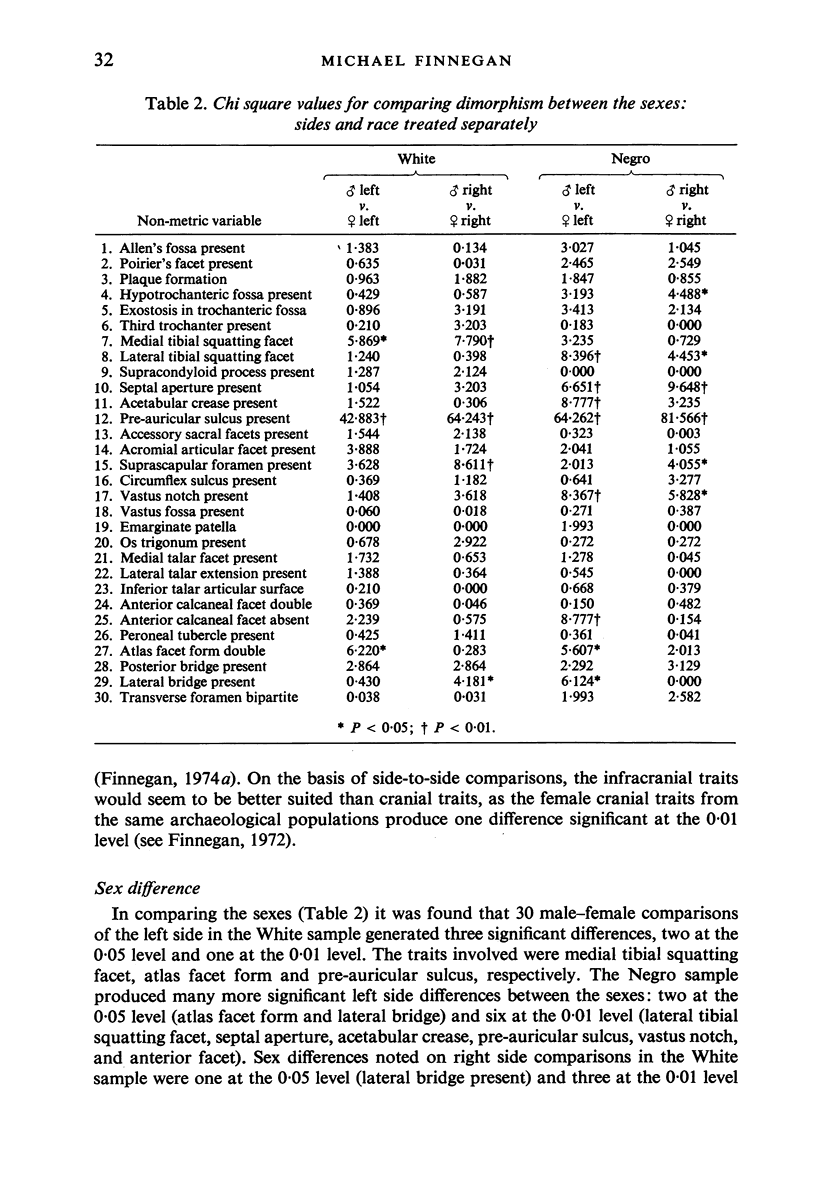

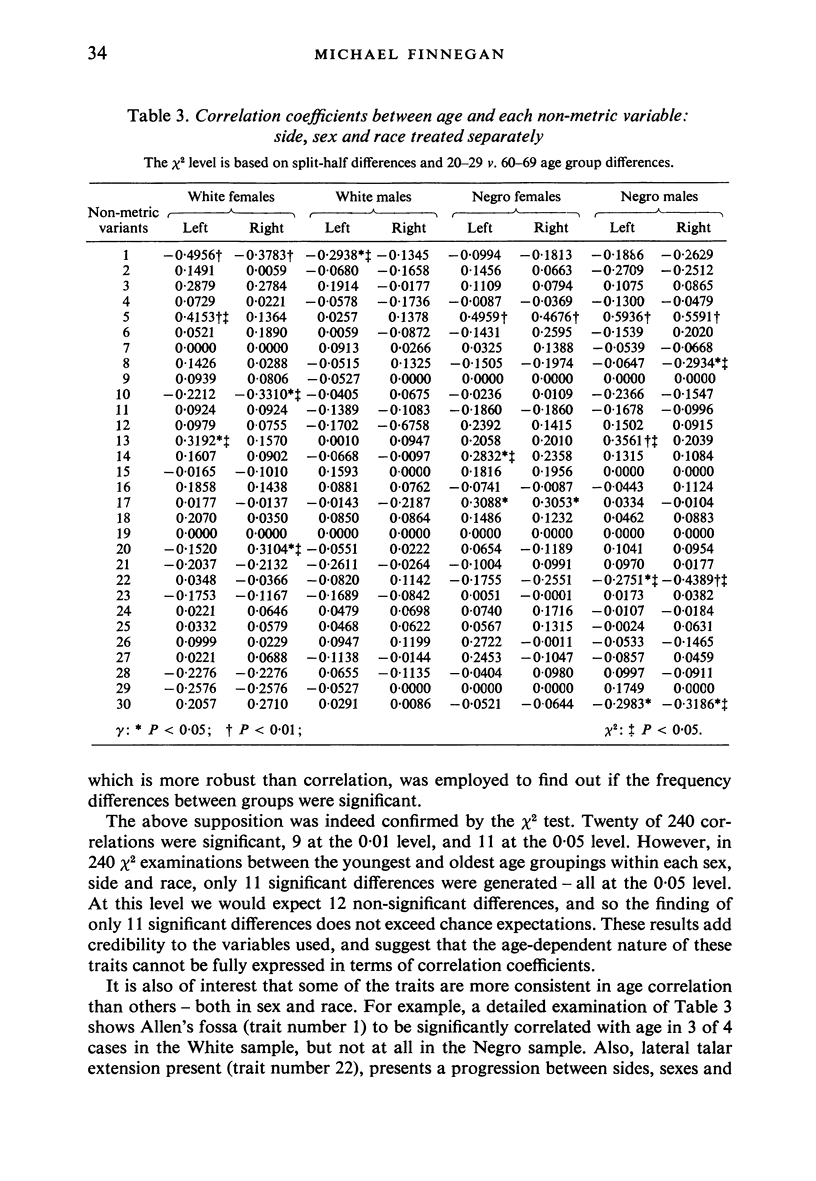
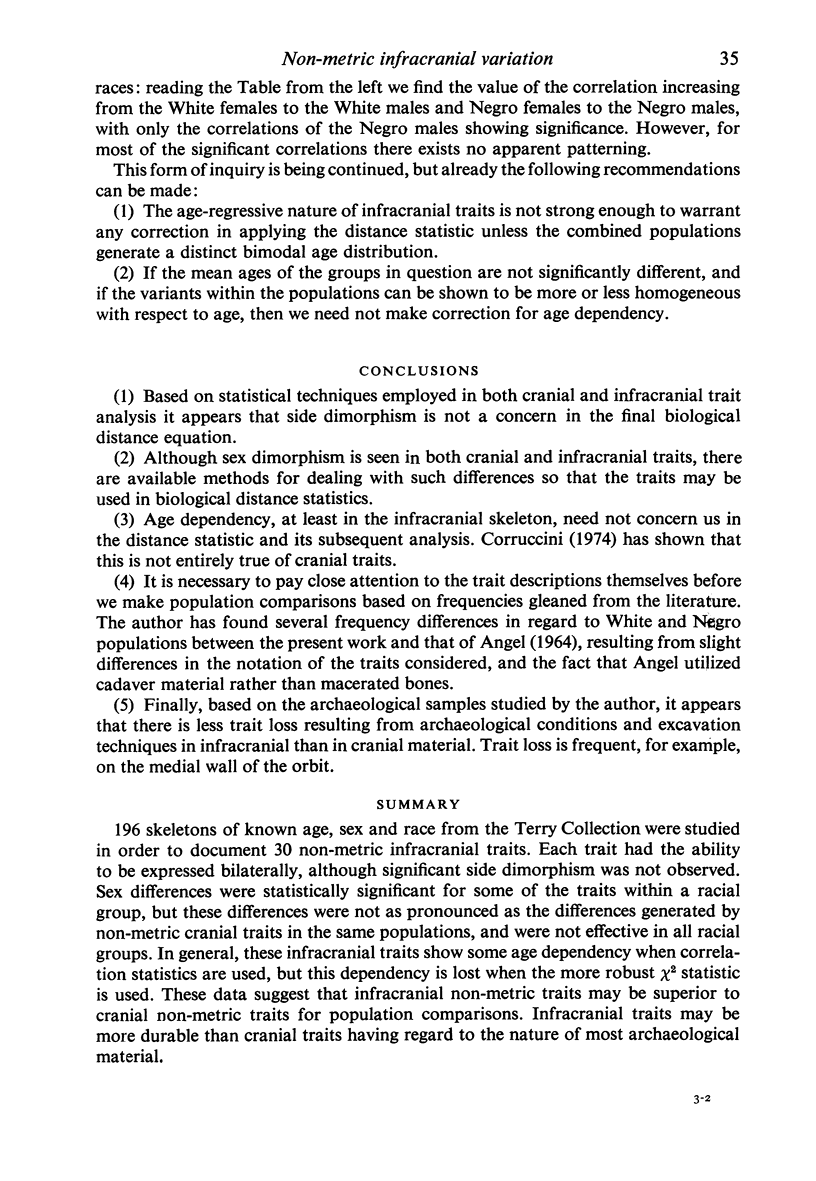
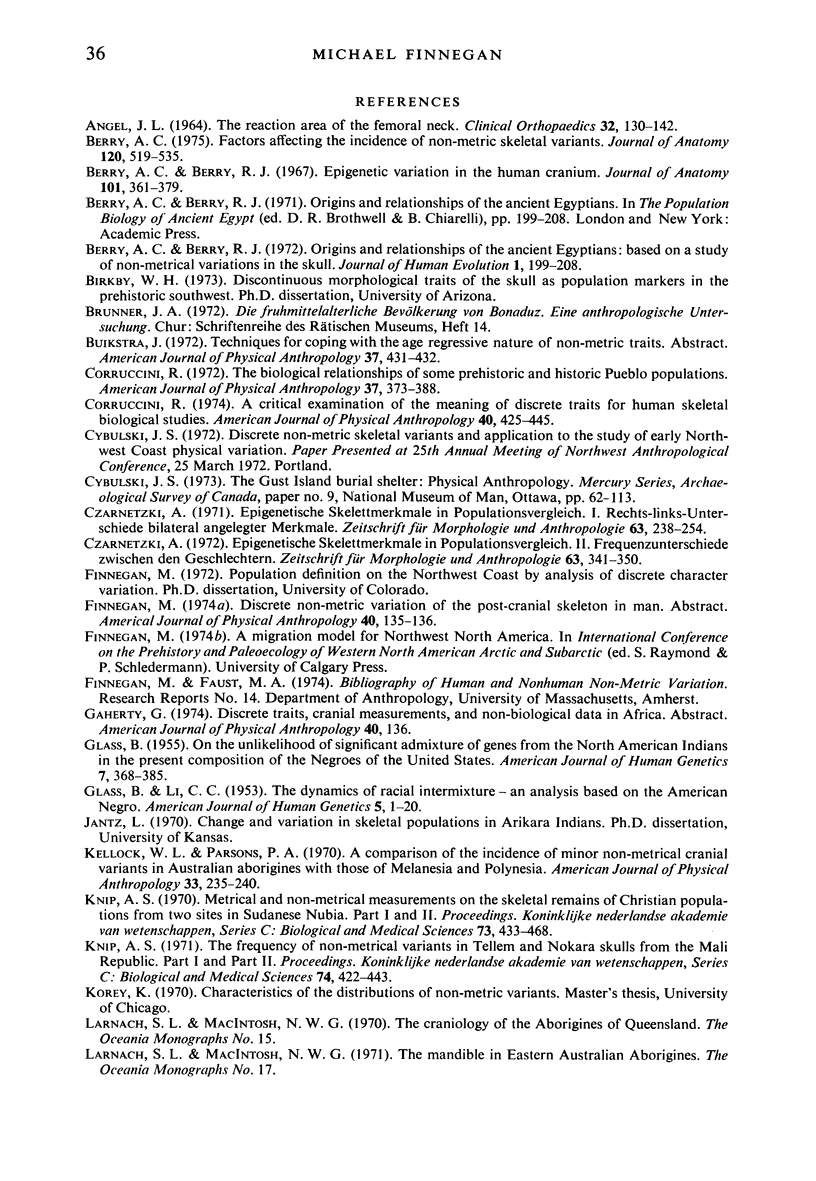
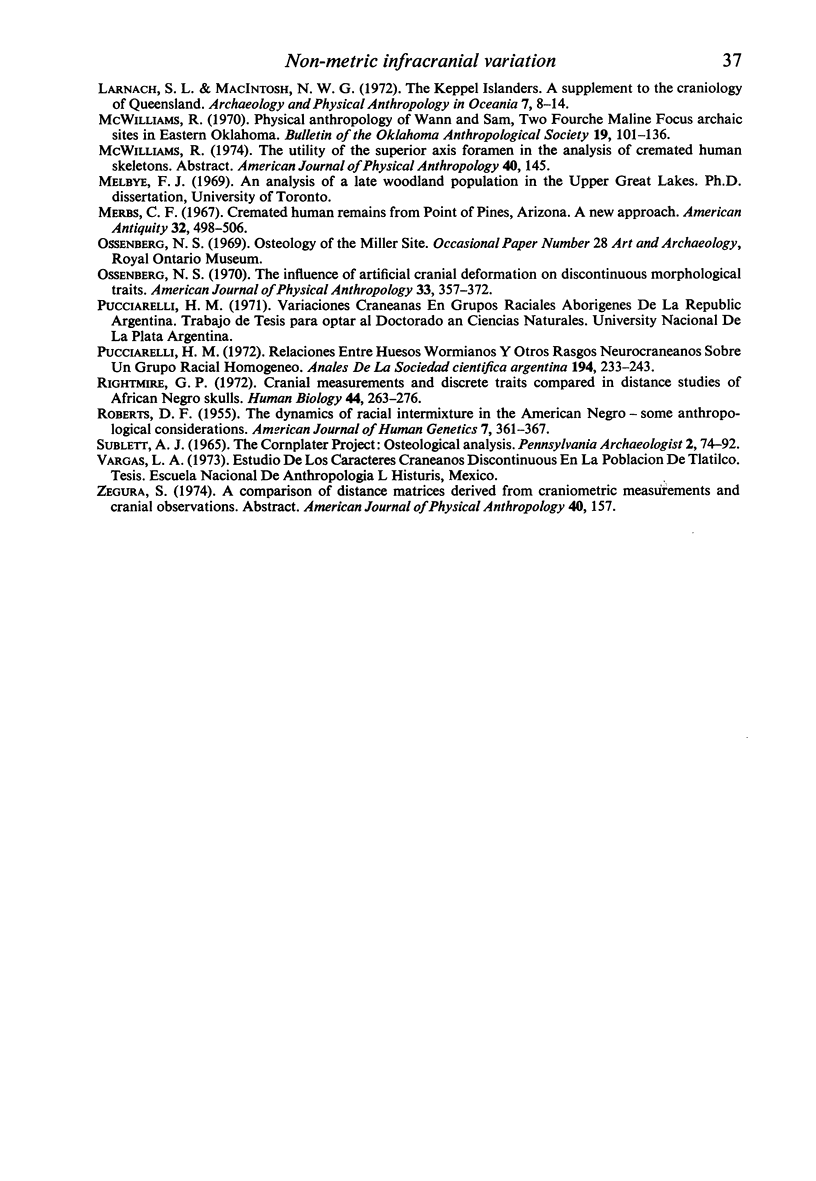
Selected References
These references are in PubMed. This may not be the complete list of references from this article.
- Angel J. L. The reaction area of the femoral neck. Clin Orthop Relat Res. 1964 Jan-Feb;32:130–142. [PubMed] [Google Scholar]
- Berry A. C. Factors affecting the incidence of non-metrical skeletal variants. J Anat. 1975 Dec;120(Pt 3):519–535. [PMC free article] [PubMed] [Google Scholar]
- Carolineberry A., Berry R. J. Epigenetic variation in the human cranium. J Anat. 1967 Apr;101(Pt 2):361–379. [PMC free article] [PubMed] [Google Scholar]
- Corruccini R. S. An examination of the meaning of cranial discrete traits for human skeletal biological studies. Am J Phys Anthropol. 1974 May;40(3):425–445. doi: 10.1002/ajpa.1330400315. [DOI] [PubMed] [Google Scholar]
- Corruccini R. S. The biological relationships of some prehistoric and historic Pueblo populations. Am J Phys Anthropol. 1972 Nov;37(3):373–388. doi: 10.1002/ajpa.1330370307. [DOI] [PubMed] [Google Scholar]
- Czarnetzki A. Epigenetische Skelettmerkmale im Populationsvergleich. I. Rechts-links-Unterschiede bilateral angelegter Merkmale. Z Morphol Anthropol. 1971 Dec;63(2):238–254. [PubMed] [Google Scholar]
- Czarnetzki A. Epigenetische Skelettmerkmale im Populationsvergleich. II. Frequenzunterschiede zwischen den Geschlechtern. Z Morphol Anthropol. 1972 Feb;63(3):341–350. [PubMed] [Google Scholar]
- GLASS B., LI C. C. The dynamics of racial intermixture; an analysis based on the American Negro. Am J Hum Genet. 1953 Mar;5(1):1–20. [PMC free article] [PubMed] [Google Scholar]
- GLASS B. On the unlikelihood of significant admixture of genes from the North American Indians in the present composition of the Negroes of the United States. Am J Hum Genet. 1955 Dec;7(4):368–385. [PMC free article] [PubMed] [Google Scholar]
- Kellock W. L., Parsons P. A. A comparison of the incidence of minor nonmetrical cranial variants in Australian aborigines with those of Melanesia and Polynesia. Am J Phys Anthropol. 1970 Sep;33(2):235–240. doi: 10.1002/ajpa.1330330209. [DOI] [PubMed] [Google Scholar]
- Knip A. S. Metrical and non-metrical measurements on the skeletal remains of Christian populations from two sites in Sudanese Nubia. II. Proc K Ned Akad Wet C. 1970;73(5):451–468. [PubMed] [Google Scholar]
- ROBERTS D. F. The dynamics of racial intermixture in the American Negro-some anthropological considerations. Am J Hum Genet. 1955 Dec;7(4):361–367. [PMC free article] [PubMed] [Google Scholar]
- Rightmire G. P. Cranial measurements and discrete traits compared in distance studies of African Negro skulls. Hum Biol. 1972 May;44(2):263–276. [PubMed] [Google Scholar]


